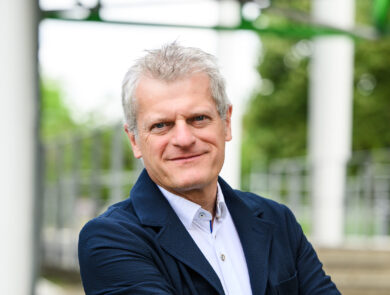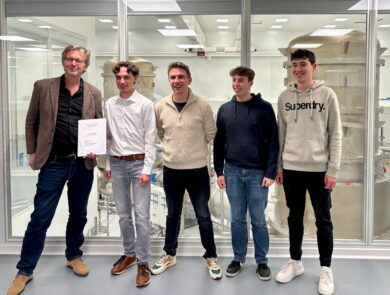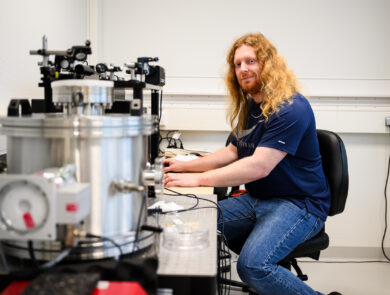A library of rocks
In a new storage facility in Aubel (Wallonia), the Euregio Meuse-Rhine’s project office for the Einstein Telescope is collecting all the subsurface samples from the soil survey in the telescope search area. This “core house” will be a valuable source of information for geologists, says geologist Geert-Jan Vis.

Earth scientists are using a series of exploratory boreholes to find the most suitable location for the underground Einstein Telescope (ET) in the border region of Belgium, the Netherlands, and Germany. To safely store and examine the extracted rock cores, the Telescope team is opening a “core house” repository in the Walloon town of Aubel. Geologist Geert-Jan Vis (Geological Survey of the Netherlands, part of TNO (the Netherlands Organisation for Applied Scientific Research)) is involved in the project and talks about the new facility.
Just what is a core house?
“By drilling, we extract hundreds of ‘cores’ from the ground, which are cylindrical sections of rock each a metre long. It’s similar to when you extract the core of an apple with an apple corer. The repository in Aubel is where we store the cores. You could say it’s like a library of rocks. The 27-metre-long building will have racks on which all the cores from each borehole will be laid out in order. For example, it’ll hold those from the E-TEST drilling sites in Banholt, Cottessen and Aubel, but also those from future boreholes.”

Why in Aubel?
“Aubel is conveniently central within the search area for the ET, so it’s easy for us to transport the cores there from the various drilling sites. And it’s close to the laboratories at universities such as Liège and Aachen where we intend investigating the drilled material.”
What will happen to the sections of rock when they arrive?
“First of all, we’ll check, label, register, and photograph them, according to TNO’s recording method. We also intend organising workshops with geologists and geotechnicians. We’ll then compare the cores from the different drilling sites to see whether they show what we were expecting, or whether there are any surprises.”
What makes this border region interesting for the Einstein Telescope?
“In the region that we’re investigating, ancient layers of solid rock occur close to the surface, for example sandstone from the Famennian stage of the Late Devonian Epoch. That tough rock, which is about 370 million years old, promises to have the right properties for constructing the ET. Above those layers lies 70-80 million-year-old chalk – referred to locally as mergel (marlstone) – a soft rock that damps down surface vibrations caused by human activity.”

If we already know that, why is drilling necessary?
“We want to gain an even better understanding of how the strata are arranged. They aren’t at the same depth everywhere; they undulate up and down, so to speak. To plan the tunnels for the ET, you want to be able to predict exactly where you’ll encounter the various layers, and what properties they have, for example their strength, permeability to water, vulnerability to fracturing…. And the only way to determine those properties is by drilling.”
How did you get involved in this project?
“My home base is at the Geological Survey of the Netherlands in Utrecht, where we study the geology of the whole country. I was already in South Limburg in 2017, studying the chalk formation in connection with groundwater, and I heard that Bjorn Vink – now my ET colleague – was doing subsoil research for the telescope. So of course we got in touch informally to catch up and share information. TNO also recently became officially involved in the subsoil research, so it was obvious that I would join in.”
Quite a trip, from Utrecht to South Limburg.
“It is if you have to travel down from Utrecht, but I live in Maastricht. Between 2013 and 2015, I co-authored a book with a colleague on Dutch wine and the relationship between wine and the subsoil. The combination of geology and gastronomy in South Limburg was so enjoyable that we moved here.”

How long will this core house be located in Aubel?
“Over the next few years, we’ll collect rock samples from the search area so as to determine the best location for the telescope’s tunnels and the corner points where they change direction. Once it’s been decided where the telescope will be installed and once construction is complete, we’ll hand over the samples to the countries where they were drilled. Studies of this kind provide a wealth of information about what’s down in the underground, for example where you can locate warm water for generating geothermal energy. Proper investigation always yields something interesting.”


